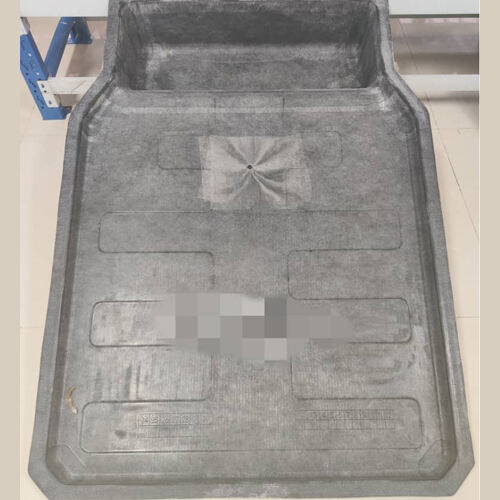HP-RTM production process
HP-RTM Introduction
HP-RTM is the abbreviation of High Pressure Resin Transfer Molding, and the full name is High Pressure Resin Transfer Molding Process, referred to as HP-RTM Molding Process. It refers to the molding process of using high-pressure pressure to hedge and mix resin and inject it into a vacuum-sealed mold pre-laid with fiber reinforced materials and preset inserts, and obtain the molding process of composite products through resin flow filling, impregnation, curing and demoulding.
The process enables low-cost, short-turn, high-volume and high-quality production. Compared with the traditional RTM injection pressure of 0.6~1.5 MPa (6~15 bar), HP-RTM usually injects glue at a pressure of 1.0~6.0 MPa (10~60 bar) or even higher, and the resin can fill the mold cavity in a short time, complete the wetting process of the preformed fiber, and promote the air bubble discharge resin, improve the surface molding quality of the product, and the process can be shortened to less than 5 min.

Characteristics of HP-RTM molding process
The HP-RTM molding process uses a mixing head to inject a low-viscosity resin into the mold, soak the preformed fabric, and finally quickly cure to form a high-strength composite part. The key technology is resin injection and curing in two stages: the pre-formed carbon fiber braid is first placed into the mold cavity of the press, and then the liquid resin is injected under high pressure for curing. Thanks to the use of a new generation of fast-reacting chemistries, the individual components in the raw material formulation are separated until they are mixed, and the multi-component raw materials are mixed when the carbon fiber preform needs to be injected with resin.
The reaction time in the raw material mixing head is very short, so during the injection phase, the viscosity of the raw material begins to decrease rapidly, and the fluidity gradually decreases, which leads to a sharp increase in the pressure in the mold (which is also the biggest feature of the process). The pressure in the mold is usually 5~12 MPa (50~120 bar), which is adjusted according to the actual process flow and workpiece.
Advantages of HP-RTM molding process
(1) Fast mold filling and good wetting effect, significantly reducing bubbles and porosity;
(2) The use of highly active resin shortens the production cycle, and the process stability and repeatability are high;
(3) Using internal release agent and self-cleaning system, the surface quality of the workpiece is good, the thickness and shape deviation are small, and the production of low cost, short cycle and high volume can be realized.
The specific process flow of HP-RTM
1. Upstream process
1) Fiber uncoiling and cutting
2) Spray the predetermined agent
3) Fiber layer positioning and superimposition
4) Fiber laying
5) Fiber fabric pre-type
6) Tailoring of the preform
2. Pressing process
1) Placement of the preform
2) Resin delivery injection
3) In-mold spraying technology
4) Demoulding and mold cleaning
5) Cooling and shaping of the workpiece
6) Apply a release agent
3. Downstream process
1) Trimming of the contour of the workpiece
2) Processing and dimensional inspection of the connection structure of the workpiece
Application of HP-RTM molding process
Automotive structural parts
Upper cover of the battery box
Sports


